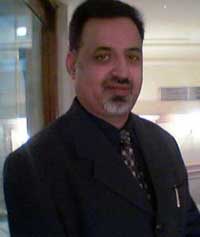 |
 |
 |
 |
|
|
|
|
|
|
|
|||
| Five star hotels in Khajurao
The distance between Chattarpur to Khajuraho is about 50 kms and road is good with one side newly laid. It took me about 45 minutes to reach Khajuraho from Chattarpur. The road turns left for Khajuraho from a village called Bamitha. From Bamitha there is a double road to Khajuraho. A word of caution here, this double road, especially the left side as you go from Bamitha to Khajuraho has trees and electric poles right in the middle of the road. More dangerous are the one foot high concrete stumps of pillars just before Khajuraho. Be very careful at night when you drive at night, as they can rip your car in half. I reached Khajuraho at 3:45 PM in the afternoon. The total time taken was 7hrs 15 minutes. As you enter Khajuraho the five star hotels are in the beginning. Then come the hotels which face the small dry lake. After that there is the main market in front of Western group of temples and an umpteen number of hotels and lodges. I checked into Hotel Payal of MP Tourism which is after the western group. Hotel Payal of MP Tourism was a nice, clean hotel with a garden, and it was a bit away from the hustle and bustle of the market. I generally prefer to stay away from the market. The rooms were clean, freshly painted, with an attached bathroom and 24 hrs hot water supply. Room rent was Rs. 690 for a double room with complimentary breakfast for 2 persons. Both I and my wife like to eat food that is not spicy and is like what we eat at our homes. Also with a kid we prefer non-spicy and homely food. Throughout our stay at Khajuraho we ate at Hotel Payal only, and the food was excellent. Some guests were complaining about the service but i didnít mind. I was in holiday mood and a 10 minute delay in service didnít make any difference. We were both tired so we took a nap for about an hour, which refreshed us, and then we went to the market in the evening. Most of the shops had overpriced handicraft items and clothes, which were available anywhere in central and north India. If you cannot stop yourself from shopping there then feel free to bargain hard. A starting price of 1/2 or even 1/3 of the quoted price may be a good start! There was a light and sound show every evening in the western group of temples. The winter timings were 6:30 to 7:30 PM for the English version and from 7:40 to 8:40 PM for the Hindi version. We bought the tickets for the Hindi show. The show was mesmerizing; with the deep baritone voice of Amitabh Bachhan (a Bollywood superstar) taking you back in time to an era of Chandela rulers, who built these temples. If you want to photograph the temples illuminated in different lights then take a tripod and set it up behind the chairs were people sit. But then you will not be able to focus on the narrative! Your next best bet is to raise the ISO setting of your cam, set the lens to max aperture and hope for the best. Next morning we visited the western and the eastern group of temples. As soon as we entered the western group of temples we were just left awed at the sight of these huge temples surrounding us. The carvings and details were just exquisite. We were compelled to think how much effort went into making these. Carving these massive stones and then placing them one on top of another without the aid of any modern equipments and cranes is a monumental achievement. It is truly a herculean effort and truly an engineering marvel. The temples have survived a thousand years of beating from extreme weather, armies of invaders, and natural calamities. It speaks volumes about the greatness of the civilizations India has. The Temples of Love as they are referred to are not all about sex. Yes, there are graphic and vivid portrayals of acts of Kama Sutra but there are many more sculptures which are equally interesting and not about sex. Each of the temples stands on a massive platform with a defined architecture. Guides are available who speak all the big languages including English, German, Dutch, French, and Japanese. There are also audio aids available at the entrance. Guide books are also available and plaques in English and Hindi are at each of the temples, informing the visitors about the history and architecture of that particular temple.
|
|
|
|
|
|
|
|
|
|
|
|
 |
 |
 |
 |
|
 |